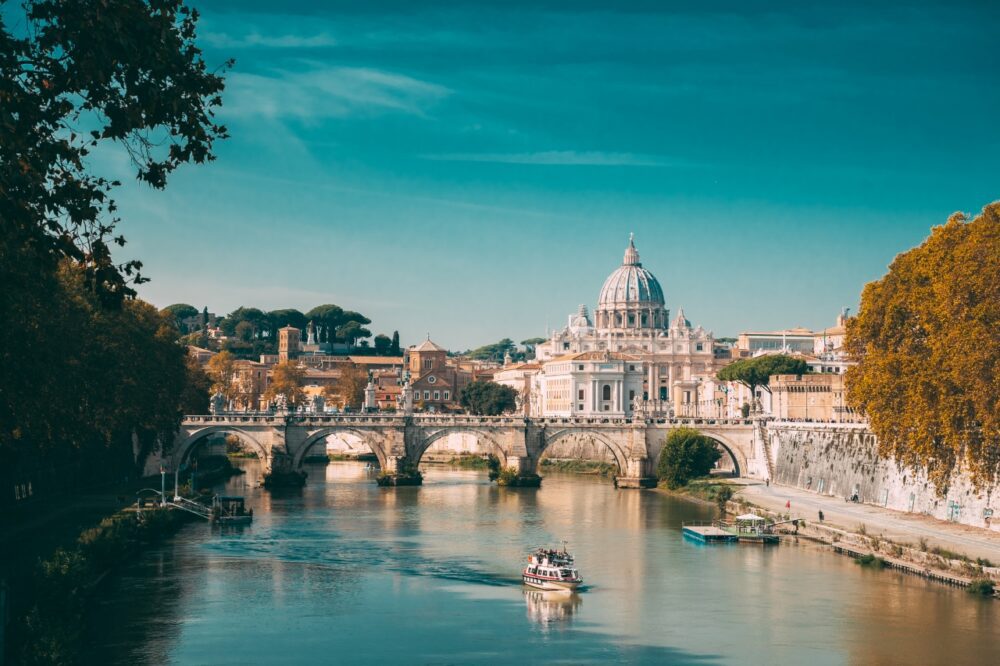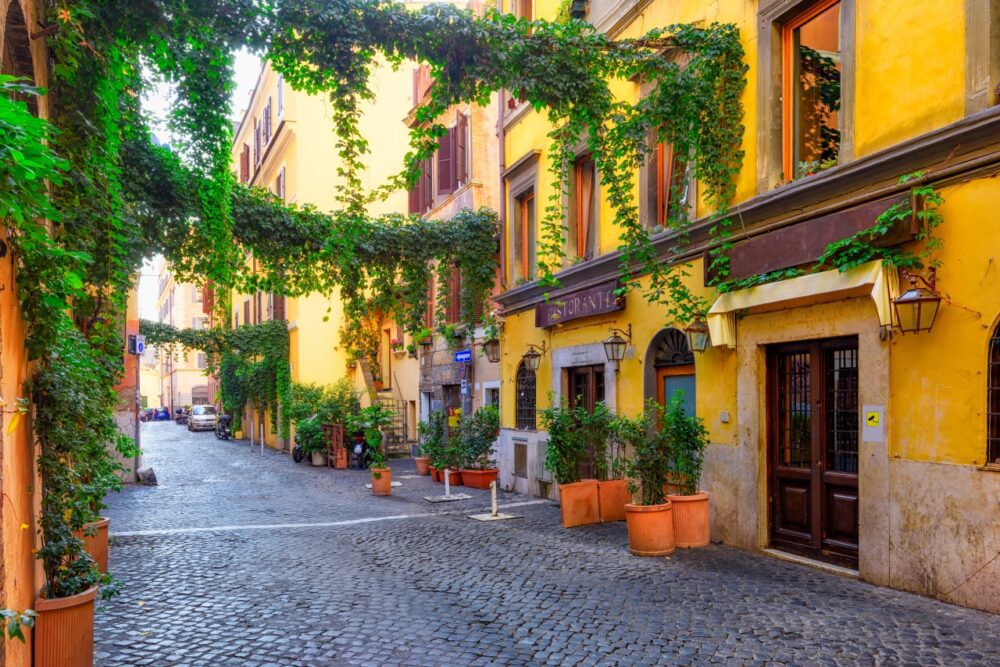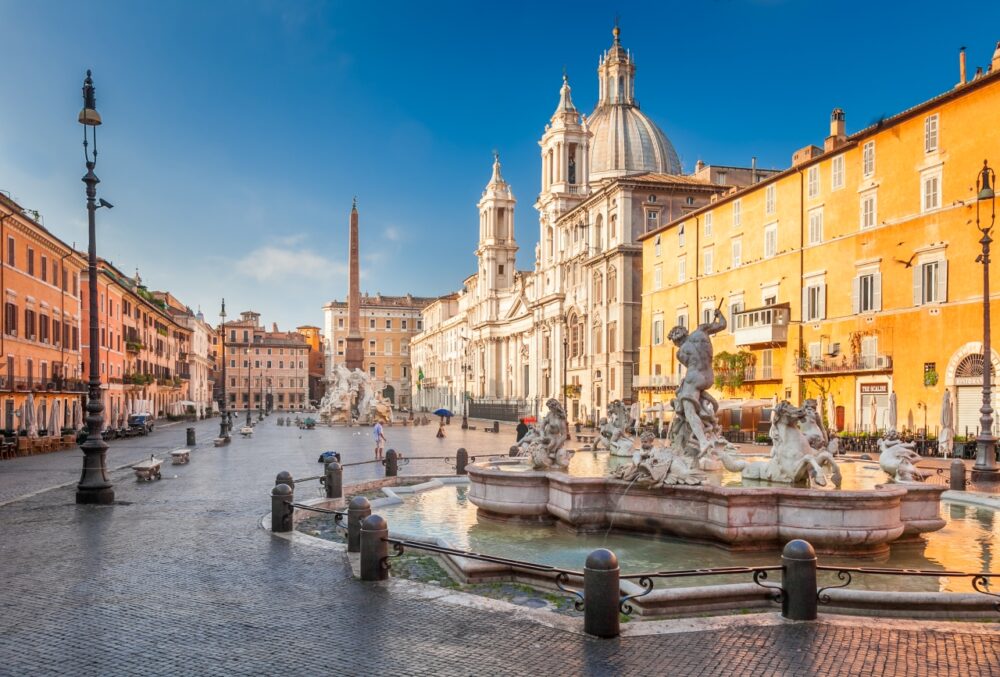
Is Rome worth visiting? Absolutely! The first time I visited Rome, I was swept away by its incredible history and timeless beauty. Walking through the ancient ruins of the Colosseum, tossing a coin into the Trevi Fountain, and savouring a gelato on the Spanish Steps, I quickly understood why this city is known as the Eternal City. Every street feels like a treasure hunt, with stunning piazzas, ornate churches, and hidden trattorias waiting to be discovered.
As the capital of Italy, Rome is a city where history comes to life. From the grandeur of the Vatican to the bustling Campo de’ Fiori market, it offers a perfect mix of ancient wonders and vibrant culture. Whether you’re marvelling at Michelangelo’s Sistine Chapel, exploring the Pantheon, or indulging in a plate of authentic carbonara, Rome is a feast for the senses. Its lively streets and warm Italian hospitality make it an unforgettable destination.
But is Rome worth visiting for you? In this blog post, we’ll uncover the top 10 reasons why Rome should be on your travel list, from its iconic landmarks to its culinary delights. Plus, we’ll share travel tips to help you make the most of your Roman holiday. Keep reading to discover why Rome is a city you’ll want to visit again and again.
Table of Contents
Pros – Reasons You Should Visit Rome
1. A Living Museum of Ancient History

Rome is like a time machine that takes you back thousands of years. The city is packed with ancient landmarks like the Colosseum, Roman Forum, and Pantheon, where history comes alive. Walking through these sites is an unparalleled experience for history lovers.
When I first stepped into the Colosseum, I was blown away by its sheer scale and the stories it holds. Imagining gladiators battling here over 2,000 years ago is surreal. The Roman Forum is equally captivating—a sprawling area filled with ruins of temples and public spaces that once formed the heart of the Roman Empire. For anyone interested in history, Rome is non-negotiable.
2. Vatican City and St. Peter’s Basilica

Vatican City, the smallest country in the world, is located within Rome and is home to the Vatican Museums, Sistine Chapel, and St. Peter’s Basilica. Whether you’re religious or not, the art and architecture here are simply awe-inspiring.
I joined a guided tour of the Vatican Museums, and it was worth every penny to skip the lines and learn about the masterpieces on display. Standing beneath Michelangelo’s frescoes in the Sistine Chapel was unforgettable. Don’t miss climbing to the top of St. Peter’s Basilica for a panoramic view of the city—it’s breathtaking.
3. Incredible Italian Cuisine

Rome is a paradise for food lovers. From hearty pasta dishes like cacio e pepe and carbonara to thin, crispy Roman pizza, every meal feels like a culinary revelation. Pair it with a glass of local wine or a scoop of gelato, and you’ll understand why Italian food is celebrated worldwide.
I had the best pasta of my life at a tiny trattoria tucked away in Trastevere. The simplicity of fresh ingredients combined with bold flavours is what makes Roman cuisine stand out. Be sure to try supplì, fried rice balls stuffed with mozzarella, as a street food snack. Rome’s food scene alone is worth the trip.
4. Stunning Architecture

Rome’s architecture is a feast for the eyes, blending ancient ruins, Renaissance masterpieces, and Baroque splendour. Landmarks like the Trevi Fountain, Piazza Navona, and Castel Sant’Angelo showcase the city’s artistic and architectural diversity.
Throwing a coin into the Trevi Fountain is more than a tourist ritual—it’s a moment of pure magic. The piazzas and fountains scattered throughout the city add to Rome’s romantic vibe, making it feel like you’re walking through an open-air museum. Don’t forget to look up—ceilings and domes are works of art here.
5. The Charming Trastevere Neighbourhood
Trastevere, one of Rome’s most picturesque neighbourhoods, is known for its narrow streets, ivy-covered buildings, and relaxed vibe. It’s the perfect place to wander aimlessly, discover local cafes, and soak in the city’s charm away from the tourist crowds.
I spent an evening in Trastevere, dining al fresco in a small piazza surrounded by twinkling lights and the buzz of conversation. The area feels authentically Roman, with a mix of locals and visitors enjoying its laid-back atmosphere. It’s a must-visit for anyone looking to experience the city’s soul.
6. World-Class Art Galleries

Rome is home to some of the world’s most renowned art collections, including the Galleria Borghese, Capitoline Museums, and MAXXI Museum of Contemporary Art. From Caravaggio to modern masterpieces, art lovers will find plenty to explore.
The Galleria Borghese was a highlight of my trip, featuring sculptures by Bernini and paintings by Titian in a stunning villa surrounded by gardens. If you’re into contemporary art, MAXXI offers a fresh contrast to Rome’s classical heritage. The city’s art scene is as diverse as it is impressive.
7. Romantic Atmosphere

Rome has an undeniable romantic allure, with its candlelit trattorias, scenic viewpoints, and charming streets. Watching the sunset from Pincio Terrace or strolling along the Tiber River creates unforgettable memories.
One of my favourite moments was sharing a gelato on the Spanish Steps as the city lit up for the evening. Rome’s beauty and atmosphere are unmatched, making it an ideal destination for couples or anyone seeking a little romance.
8. Bustling Markets and Shopping
Rome’s markets are vibrant hubs of activity, offering everything from fresh produce to antiques. The Campo de’ Fiori Market is great for food lovers, while the Porta Portese flea market is perfect for treasure hunters.
I loved browsing the Campo de’ Fiori Market in the morning, picking up fresh cheeses and bread for a picnic. For high-end shopping, Via dei Condotti is the place to be. Whether you’re looking for souvenirs or luxury goods, Rome’s shopping scene has something for everyone.
9. Endless Gelato Options
No trip to Rome is complete without indulging in gelato, and the city is packed with artisanal shops offering creative flavours. From pistachio to tiramisu, you’ll find gelato that will make you question why you’ve ever eaten ice cream elsewhere.
I became a regular at Gelateria del Teatro, where the flavours are inspired by seasonal ingredients. Walking through the city with a cone in hand became a daily ritual. For the best experience, look for gelato shops that store their gelato in covered tubs—those are usually the most authentic.
10. The Energy of a Living City
Despite its history, Rome is a vibrant, modern city full of energy. Its bustling piazzas, lively cafes, and animated locals give it a unique rhythm that feels alive and welcoming.
I loved how the city seemed to change pace depending on the time of day—from the morning buzz of espresso bars to the leisurely dinners that stretch late into the night. Rome has a way of making you feel part of its story, even if you’re just passing through.
Cons – Things to Consider When Visiting Rome
1. Crowds and Long Lines
Rome’s popularity means it’s almost always crowded, especially at major attractions like the Colosseum, Vatican, and Trevi Fountain. Long lines can eat into your sightseeing time if you’re not prepared.
When I visited the Vatican, the line to enter St. Peter’s Basilica stretched around the square. Booking skip-the-line tickets or guided tours can save you hours of waiting. If possible, visit during the shoulder seasons of spring or autumn to avoid the worst of the crowds.
2. Expensive Accommodation
Rome’s popularity comes with a cost, and accommodation in the city centre can be pricey, especially during peak tourist seasons. Budget travellers may need to compromise on location or amenities.
I found that staying slightly outside the city centre in areas like Testaccio or San Lorenzo offered more affordable options without sacrificing too much convenience. Public transport is efficient, so you can still reach major attractions easily while saving money on your stay.
3. Intense Summer Heat
Rome’s summers can be scorching, with temperatures often exceeding 35°C (95°F) in July and August. Combined with the crowds, the heat can make sightseeing exhausting.
I visited Rome in July, and while the city was beautiful, the heat made exploring less enjoyable. Early mornings and late afternoons were the best times to venture out, while midday was perfect for a leisurely lunch or museum visit. If you’re sensitive to heat, consider visiting in spring or autumn instead.
4. Pickpockets and Scams
As with any major tourist destination, pickpockets and scams are something to watch out for in Rome, particularly in crowded areas and on public transport.
I was cautious on the metro and kept my belongings secure, and thankfully I didn’t have any issues. Using a money belt or anti-theft bag can give you peace of mind. Be wary of overly friendly strangers or offers that seem too good to be true, as scams can target unsuspecting tourists.
5. Navigating Traffic and Public Transport
Rome’s traffic can be chaotic, and its public transport system, while extensive, isn’t always the most reliable. Buses can be crowded, and metro lines don’t cover every part of the city.
I relied on walking for most of my trip, which was manageable within the central areas. For longer distances, the metro was the most efficient option, but buses required patience. If you’re exploring Rome, give yourself extra time to account for delays or detours.
When to Visit Rome
The best times to visit Rome are spring (April to June) and autumn (September to October), when the weather is warm but not too hot, and the city is alive with outdoor cafes and events. These months are perfect for exploring Rome’s ancient landmarks and cobbled streets without the peak summer crowds. Summer (July and August) is busy and hot, but the lively atmosphere and long evenings make it an exciting time to visit, especially for evening strolls through piazzas. Winter (November to February) is quieter and cooler, ideal for those looking to enjoy Rome’s museums, churches, and Christmas markets at a slower pace.
How to Get to Rome
Rome is served by two airports: Leonardo da Vinci-Fiumicino (FCO), the main international hub, and Ciampino (CIA), which primarily handles budget carriers like Ryanair and Wizz Air. From Fiumicino, the Leonardo Express train runs non-stop to Termini Station in the city centre in about 30 minutes, while regional trains and buses offer cheaper alternatives. From Ciampino, buses to Termini are the most convenient option. Rome is also well-connected by high-speed trains, with services like Trenitalia and Italo linking it to Florence, Naples, and Milan in just a few hours.
Where to Stay in Rome
Rome offers a wide range of accommodation options in its historic neighbourhoods:
- Luxury: Centro Storico – Stay in the heart of Rome near iconic landmarks like Piazza Navona and the Pantheon. Options include the elegant Hotel de Russie and Hassler Roma, offering top-tier luxury and classic Roman charm.
- Mid-range: Trastevere – Known for its lively atmosphere, winding streets, and local restaurants, Trastevere is ideal for a characterful stay. Consider Hotel Santa Maria or Relais Le Clarisse, which provide comfort and charm in this vibrant district.
- Budget: Monti – A trendy, up-and-coming neighbourhood close to the Colosseum and Termini Station. Affordable stays like The Beehive Hostel or Hotel Fori Imperiali Cavalieri are great for exploring Rome on a budget.
Getting Around Rome
Rome’s ATAC public transport system includes buses, trams, and a limited but efficient metro network, with single tickets and day passes available. The metro is useful for major landmarks like the Vatican, Colosseum, and Spanish Steps, but buses and walking are better for navigating Rome’s historic centre. Taxis can be pricey, so ensure they’re officially licensed if you use one. Rome also has an e-bike and scooter-sharing system, perfect for short trips through pedestrian-friendly zones. For a classic experience, explore the city on foot—many of Rome’s iconic sights are clustered together, making walking the best way to soak up its atmosphere.
How Long to Spend in Rome
Three to four days is ideal for exploring Rome’s highlights, including the Colosseum, Roman Forum, Vatican City, and the Trevi Fountain. This allows time to enjoy leisurely meals, visit smaller churches like Santa Maria in Trastevere, and soak in the atmosphere of neighbourhoods like Campo de’ Fiori or Trastevere. With an extra day, consider visiting the Catacombs of San Sebastiano or taking a day trip to Tivoli’s Villa d’Este or Ostia Antica. Rome’s combination of history, art, and vibrant street life ensures you’ll never run out of things to explore.
Conclusion
So, is Rome worth visiting? Absolutely! With its unparalleled historical sites, world-class art, and incredible food, Rome is a city that offers something for everyone. Highlights like the Colosseum, Vatican City, and charming neighbourhoods like Trastevere make it a must-visit. While it can be crowded and a bit chaotic, its magic and beauty more than make up for it. If you’re ready to explore one of the world’s most iconic cities, start planning your trip to Rome today—you’ll never forget it!
